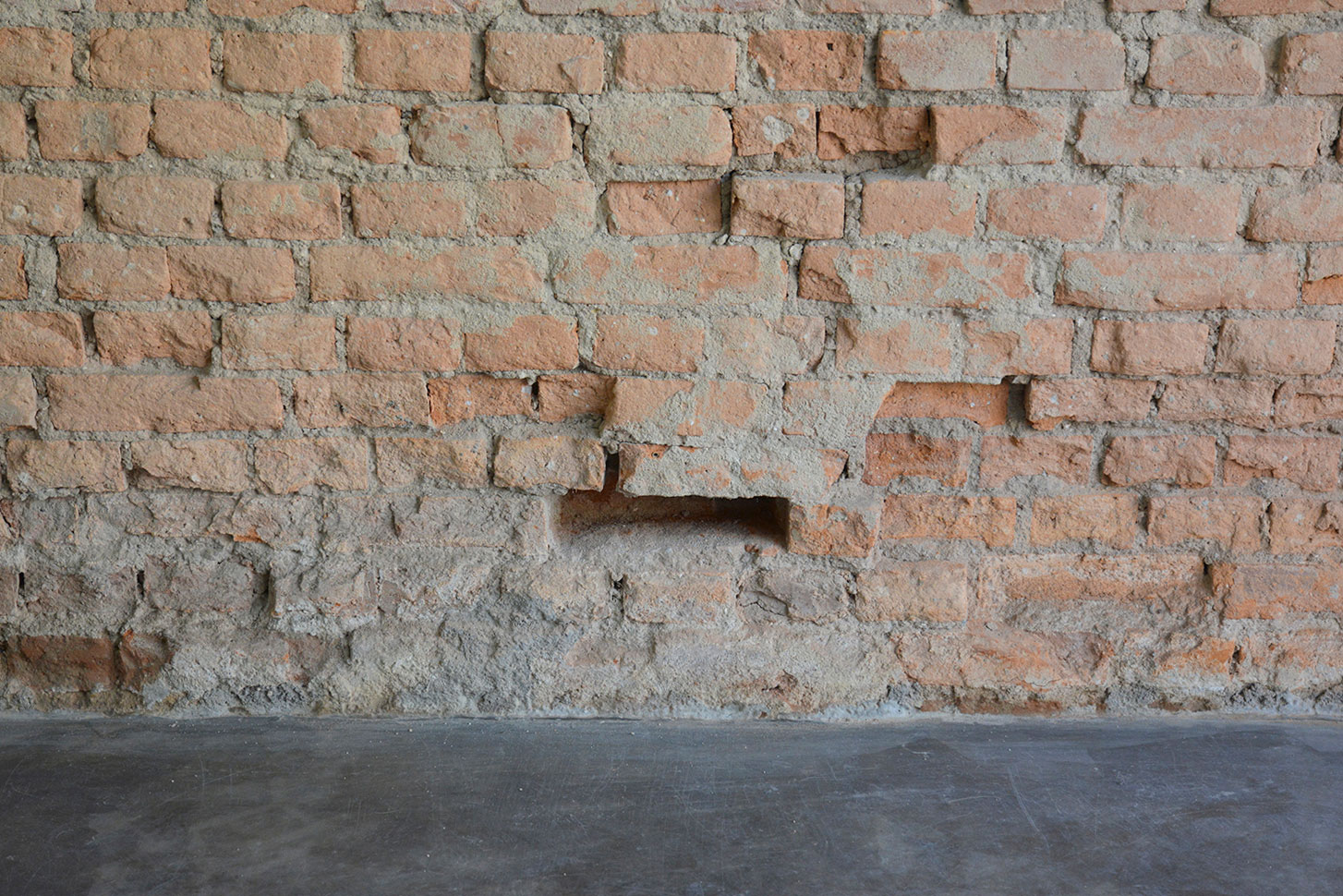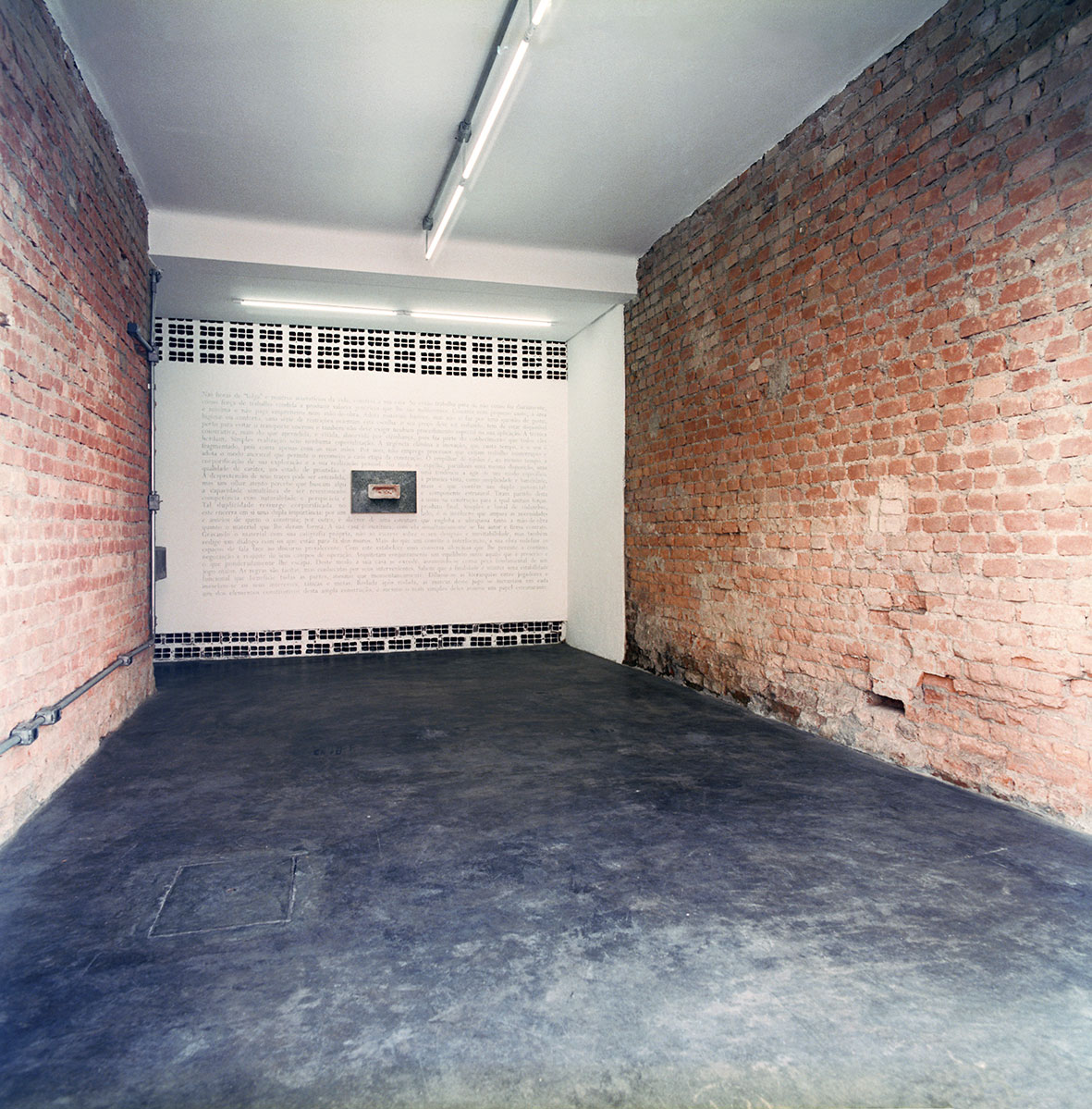Constructo
closeIn his spare time and in other interstices of life he builds his house. Only then he works for himself, not as he does daily, as a marketed labor force producing generic values that are indifferent to him. He builds with few expenses; the area is minimal and he pays neither a contractor nor manpower. He uses basic materials but does not do this for the sake of taste, hygiene or comfort. A series of restrictions guide his choice: the material’s price should be low, it must be available nearby to avoid costly transport, and it should not require any special procedure in its application. The constructive technique, more than learned, is experienced, absorbed by proximity, because it is part of the knowledge that they all inherit. Simple realization without specialization. Urgency purges innovation, which costs time, and his is fragmented, because he can only count on his own hands. Therefore, he does not employ processes that require uninterrupted work and adopts the familial way that allows recommencement at each stage of construction.1
Constructo, 2017, exhibition view

The stacking of bricks is at once the embodiment of his exploitation and his personal fulfillment. He mirrors himself in the brick, they share the same disposition, a certain quality of character, a state of readiness and a tendency to behave in a specific way. The unpretentiousness of their features can be understood, at first glance, as simplicity and banality. But an attentive eye realizes that they are aiming further, and that they contain a double potential, the simultaneous ability to be both a cladding and a structural component.2 They take advantage of this competence with sincerity and sagacity, using it in the construction for which they have joined forces. Such duality reappears embodied in the final product. Simple and banal at a glimpse, it enfolds a double weight. On the one hand, it is the enclosure that supports the needs and desires of him who built it. On the other, it is the foundation of a structure that encompasses and surpasses both his workforce and the material that gave it shape.
Constructo, 2017, exhibition view

With his house he makes himself an author and signs a contract. Engraving the material with his own calligraphy, he not only writes about his enterprise and inevitability, but also composes a dialogue with those who are beyond his walls. More than an invitation to an interlocution, his work redefines the spaces of speech versus the prevailing discourse. He ascertains a silent conversation that allows for the continuous negotiation and readjustment of his fields of operation, managing a balance between what is officially approved and what ponderously escapes it. His house goes beyond itself, turning into a fundamental piece of a bigger game. The rules are known by the participants, despite being unspoken. They are aware that the purpose is to maintain a functional stability that benefits all parties, even if momentarily. The hierarchies between players are diluted, and their interests, tactics and goals are mixed. Round after round the marks of this game are embedded in each one of the constituent elements of this broad construction, and even the simplest of them undertakes a structuring role.
Rubens Mano, Lugar Marcado, 2017, photography

Text made in collaboration with artist Rubens Mano and part of the site-specific work Constructo, 2017, exhibited in the artist-run project 'one work one text' (um trabalho um texto), São Paulo, Brazil. Unlike a work designed for a specific space, Constructo is based on the convergence between a found object, a space and this text. The content of the latter is more than the explanation of a correspondence between object and space, asserting itself as a fundamental piece within this triad that is the work. The text explores the threshold between the factual and the fictional as a way of problematizing issues related to the constitution of a certain existing context. This context is simultaneously rooted in and goes beyond the specificity of the site where the work exists.
Constructo, 2017, exhibition view

-
Paragraph made with excerpts from Sérgio Ferro’s text 'A produção da casa no Brasil' in Arquitetura e Trabalho Livre. Cosac Naify, São Paulo; 1st edition, 2006, pp. 61-101.
-
'What do you want, brick?', the architect Louis Kahn asked in the early 1970s. The answer, according to Kahn, is that the brick wants to be an arch and not just a coating without any structural function. One key feature to understanding the brick as an architectural material resides in its dual potential to be structure and cladding.